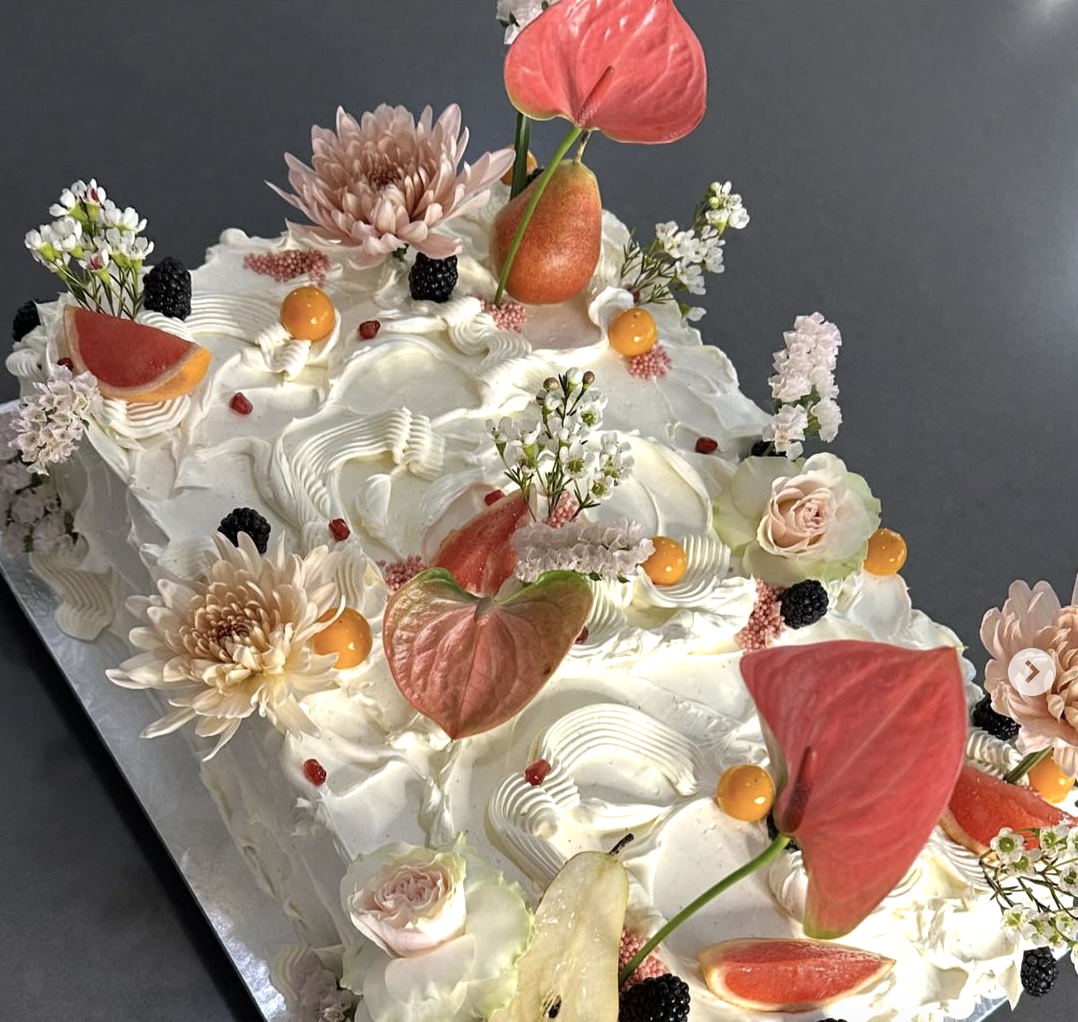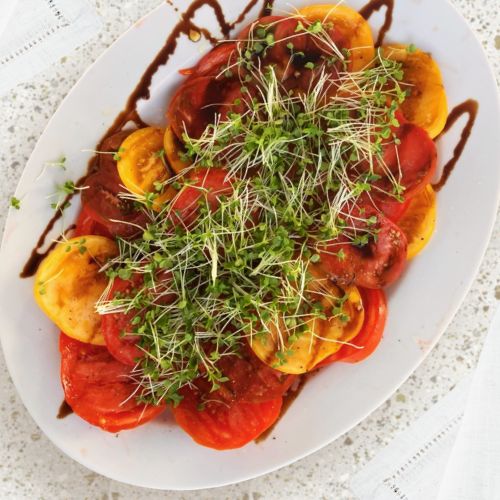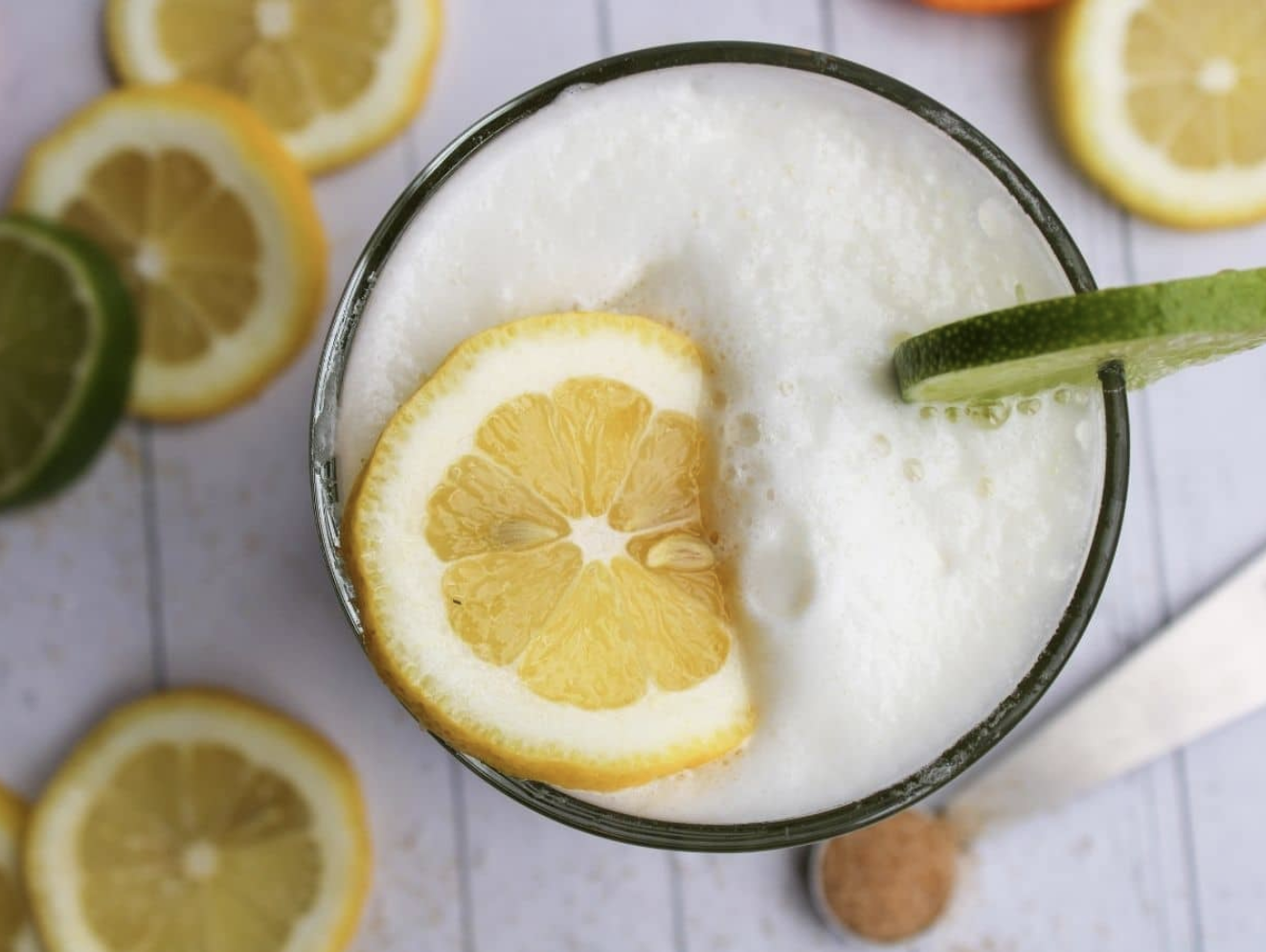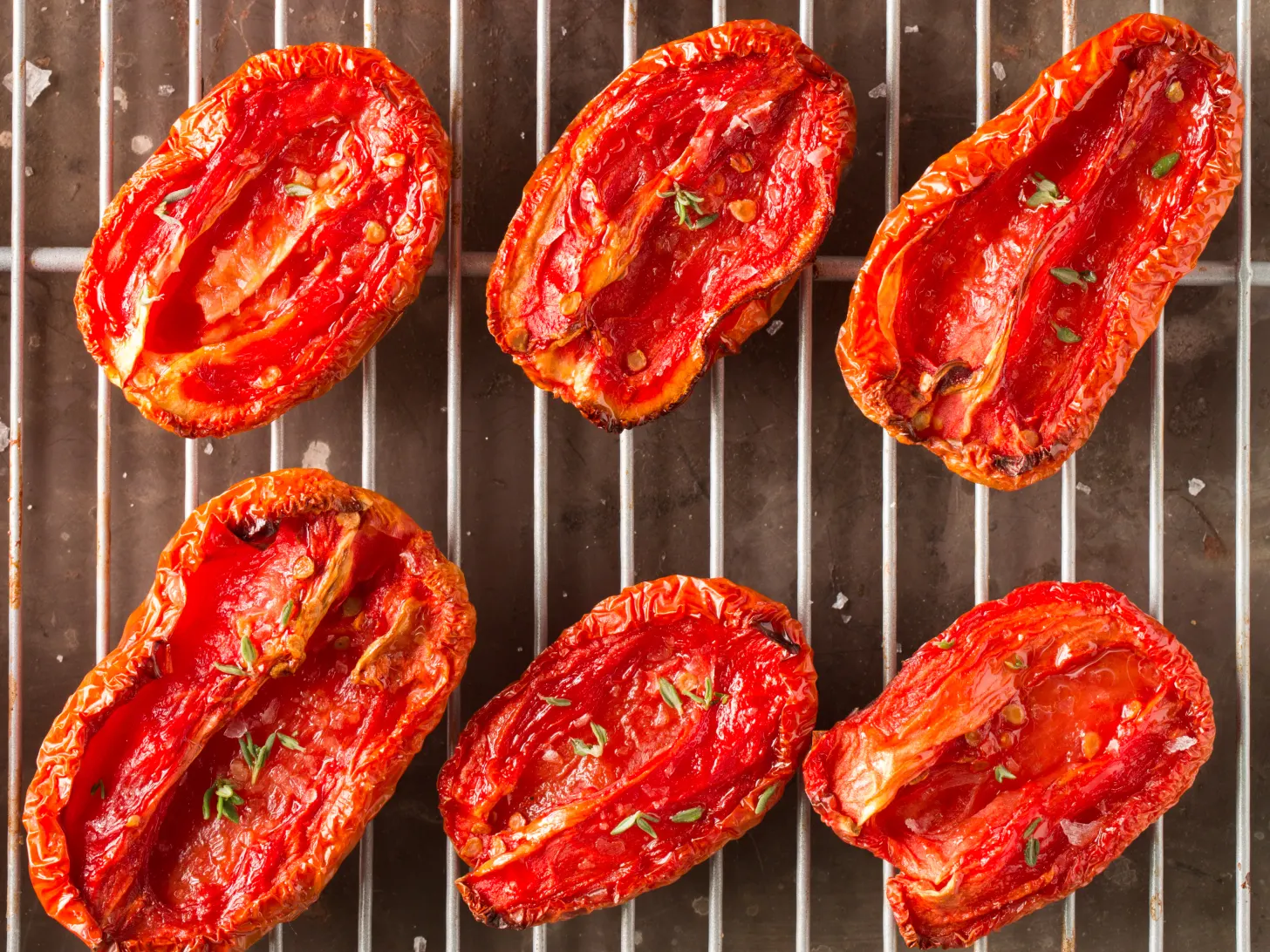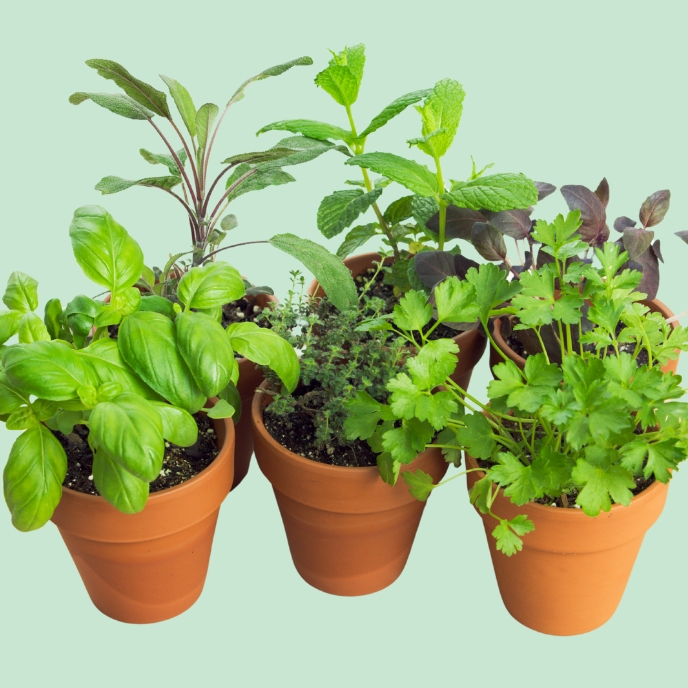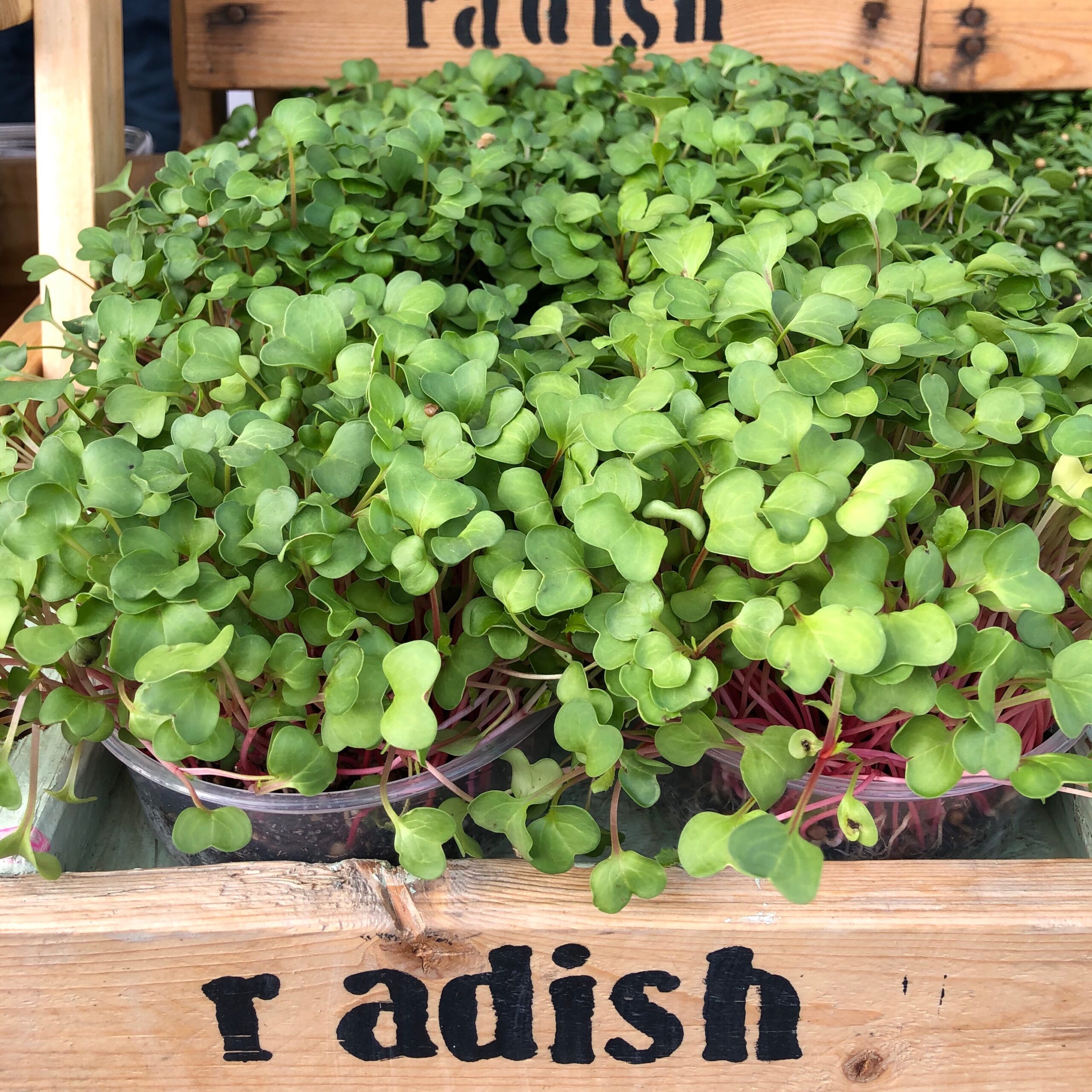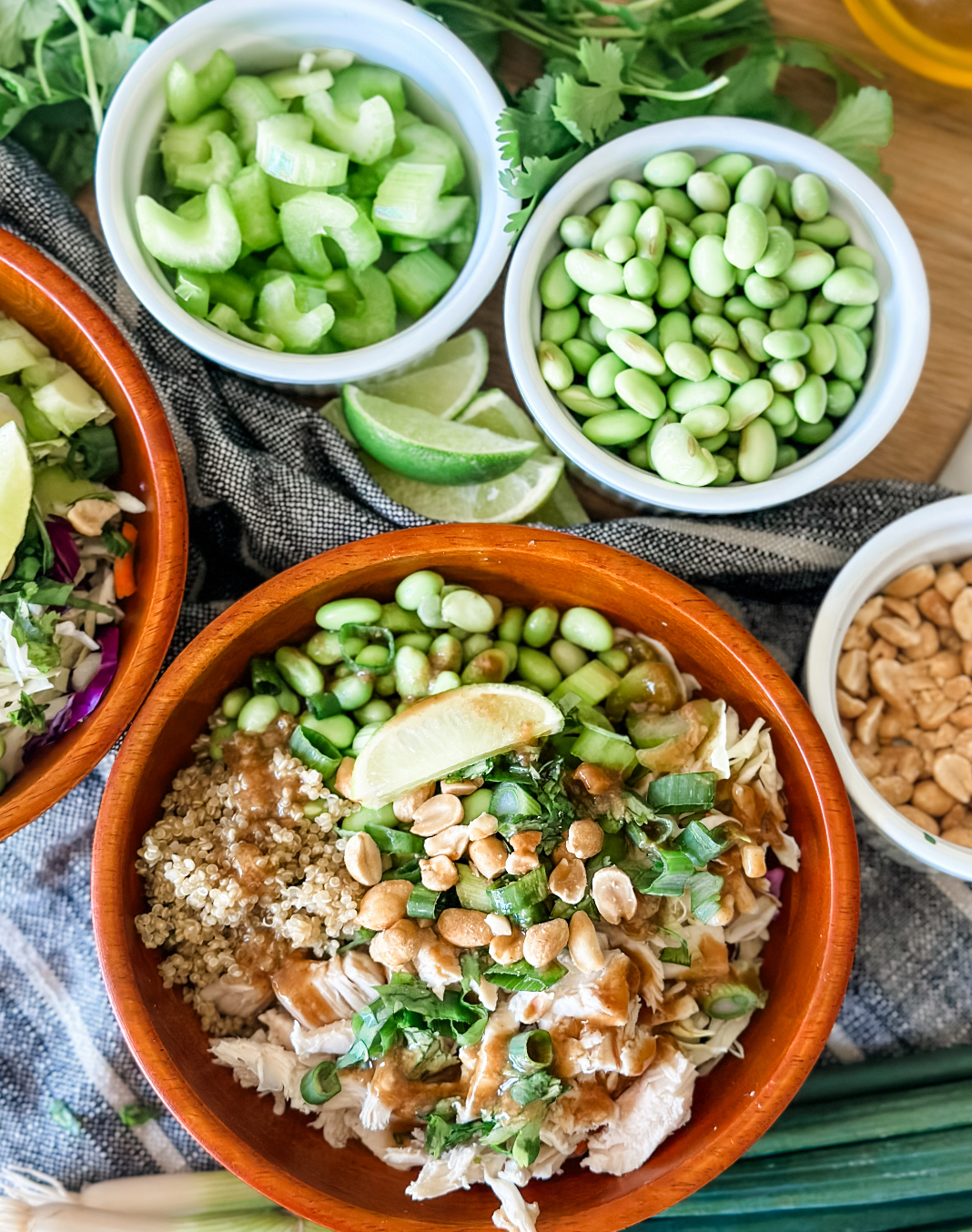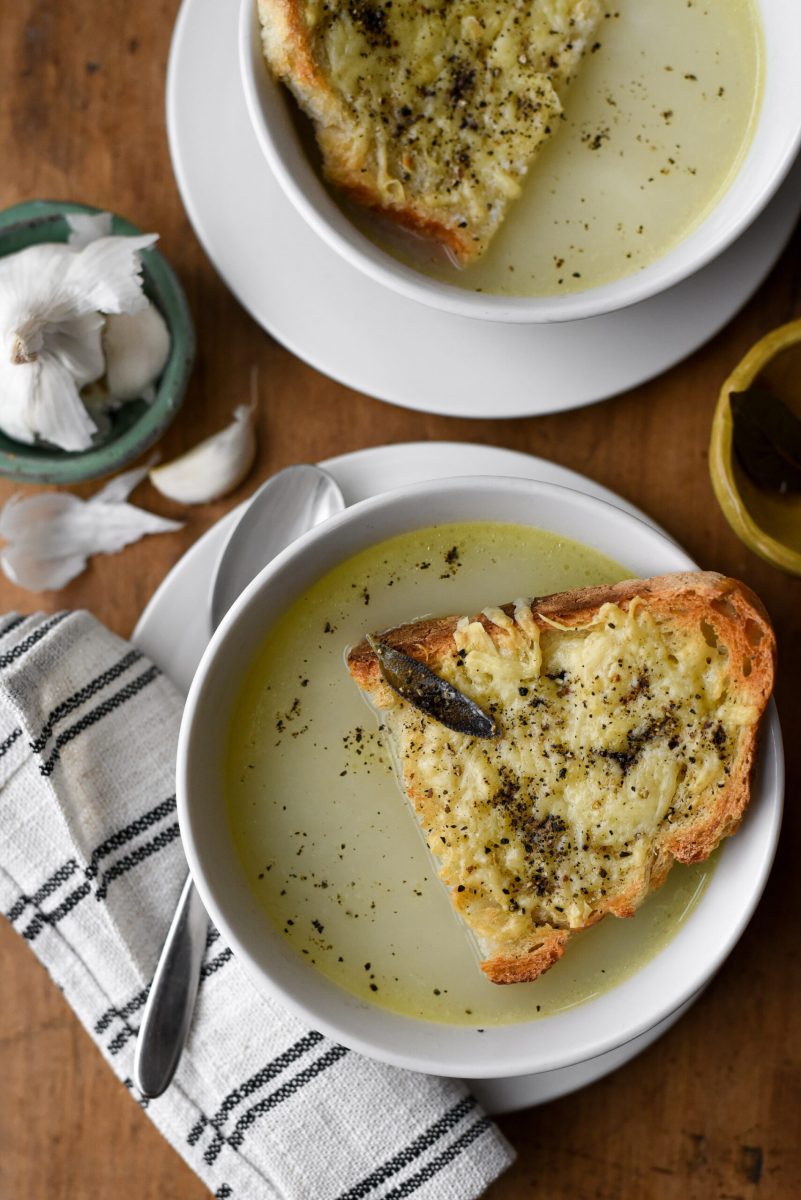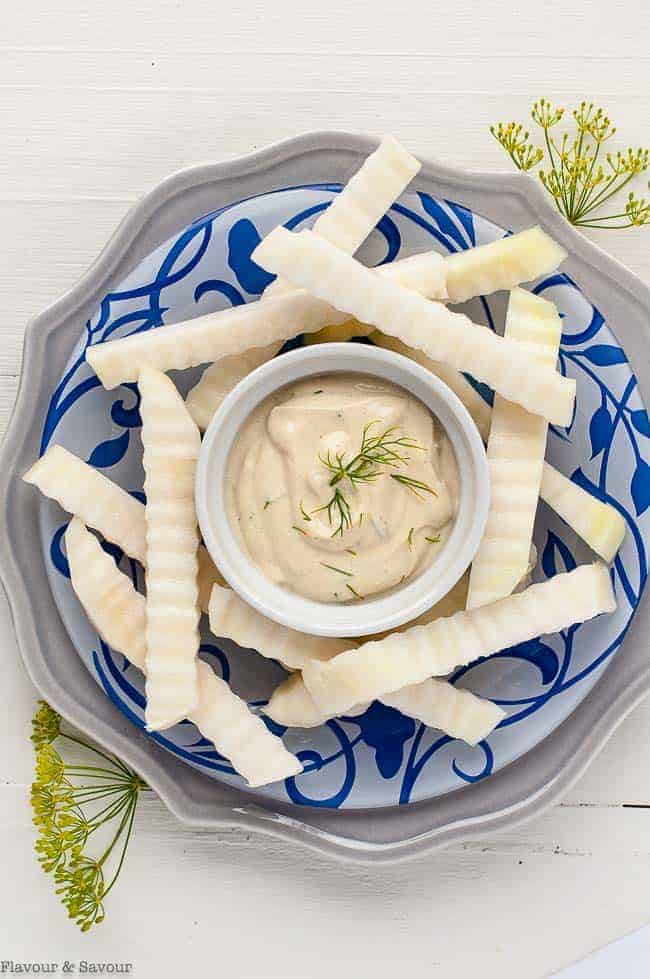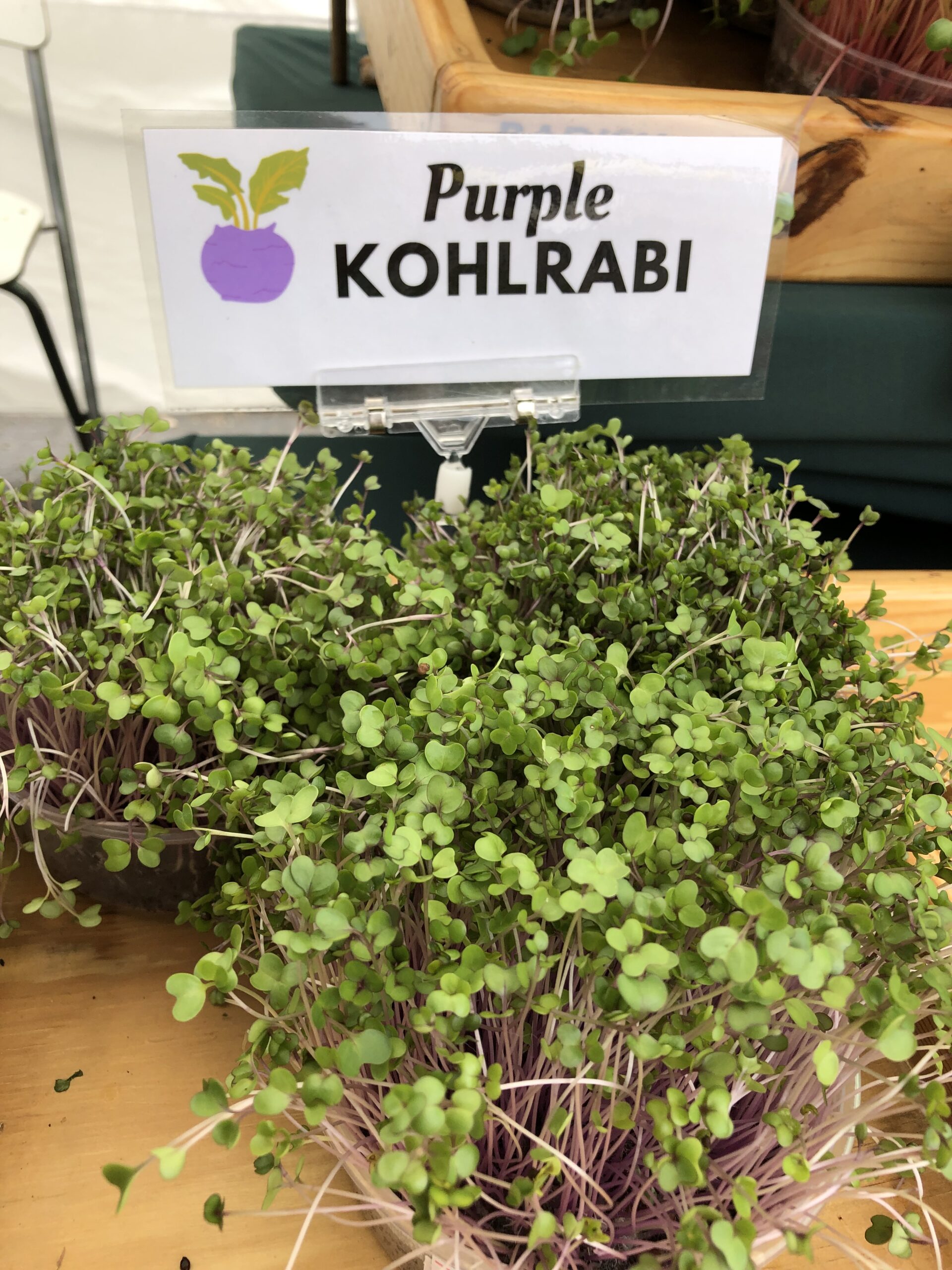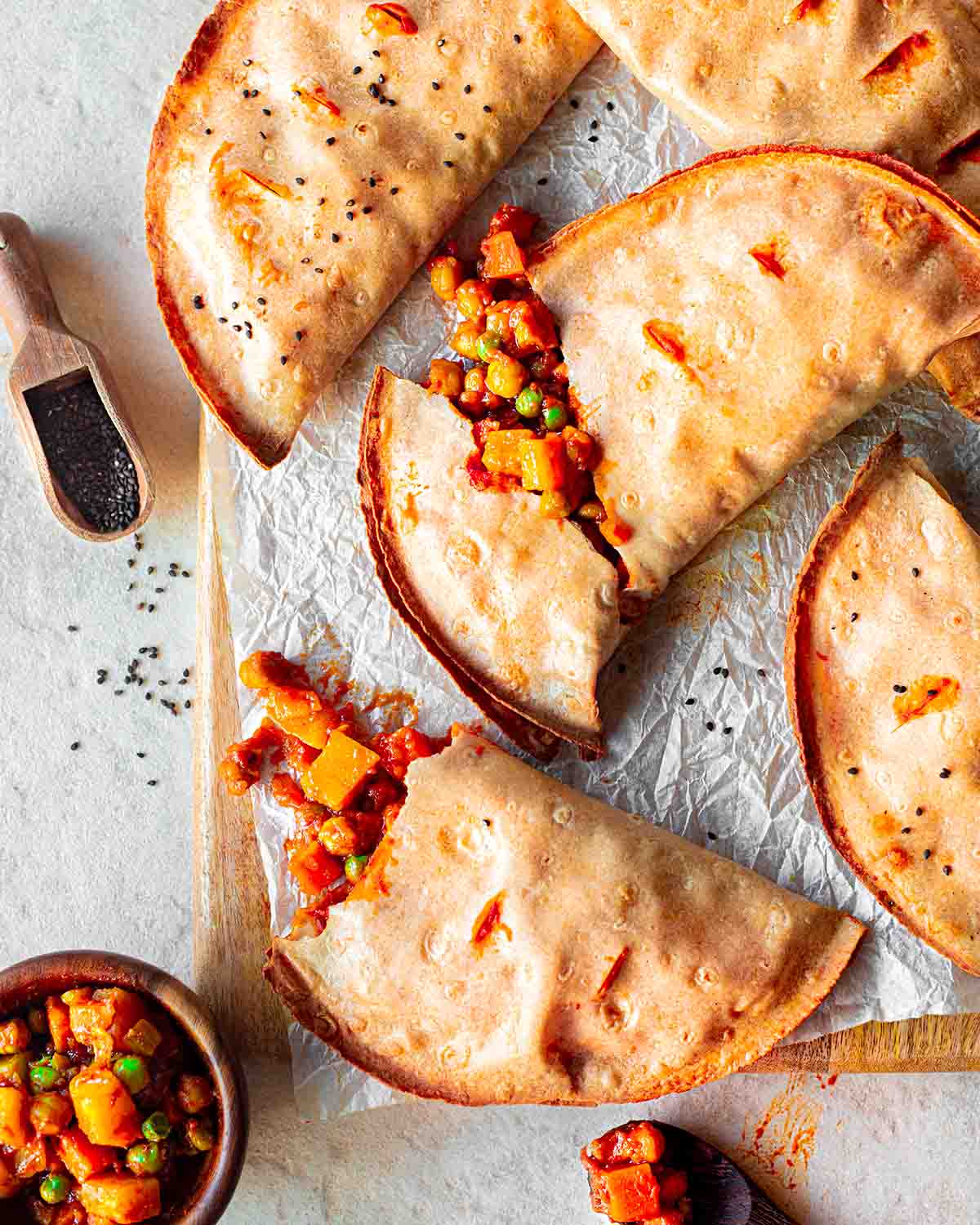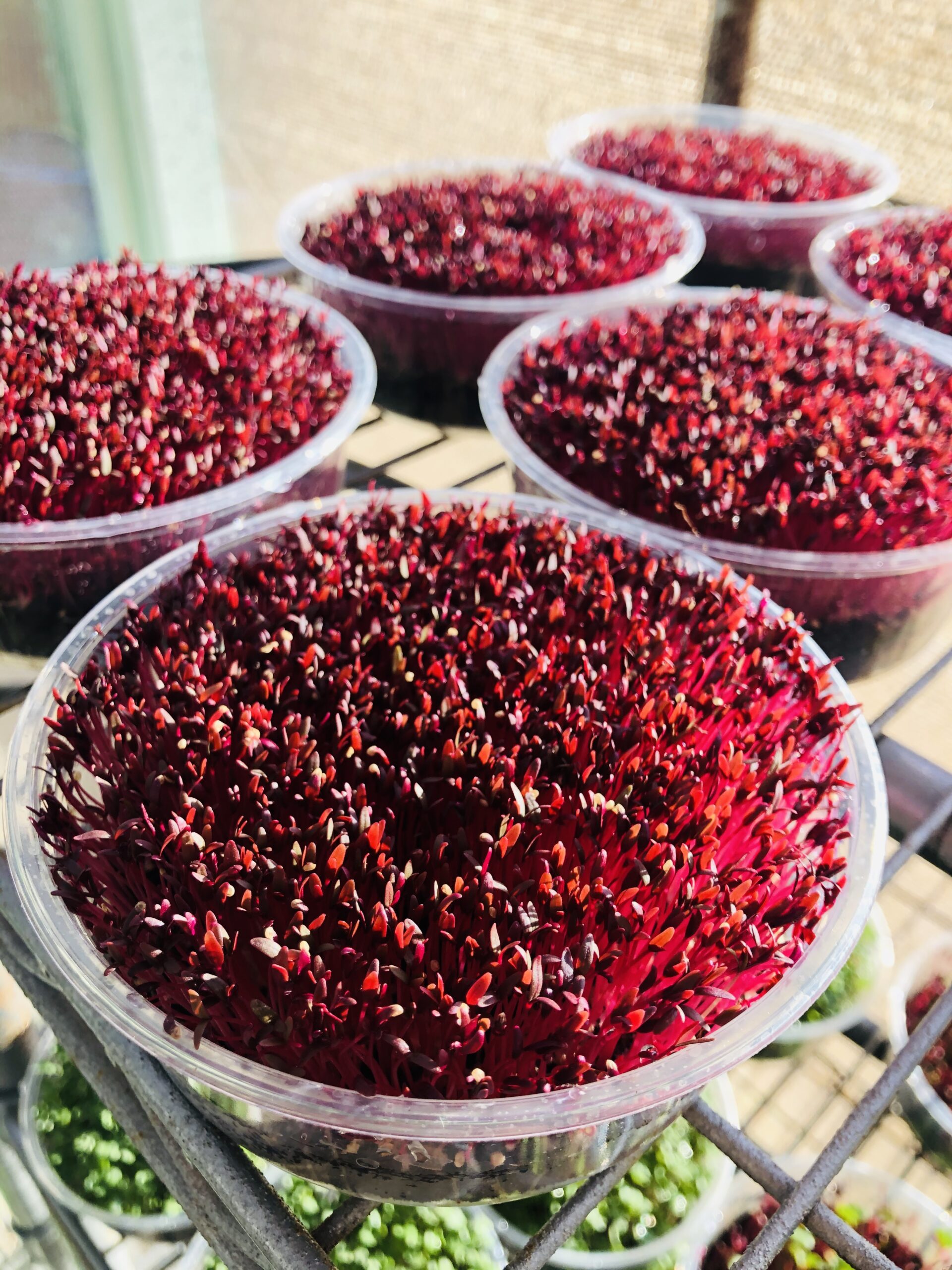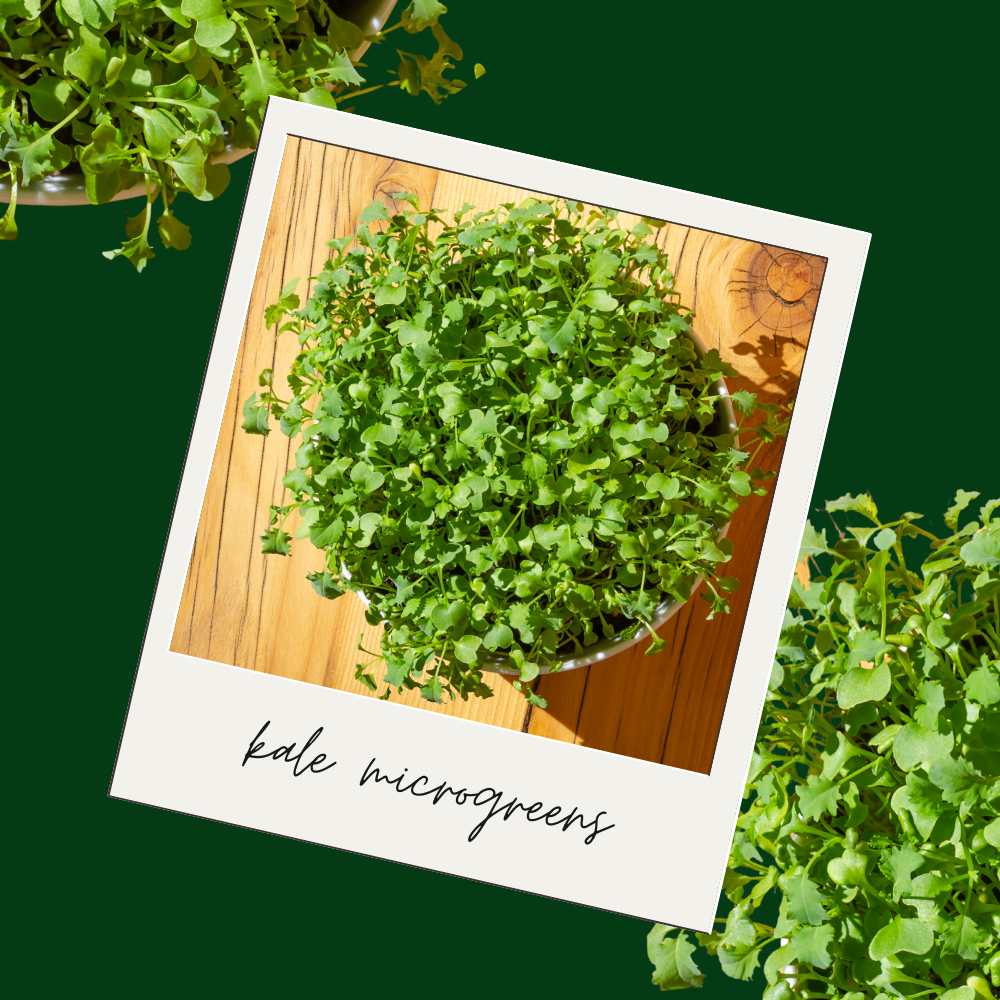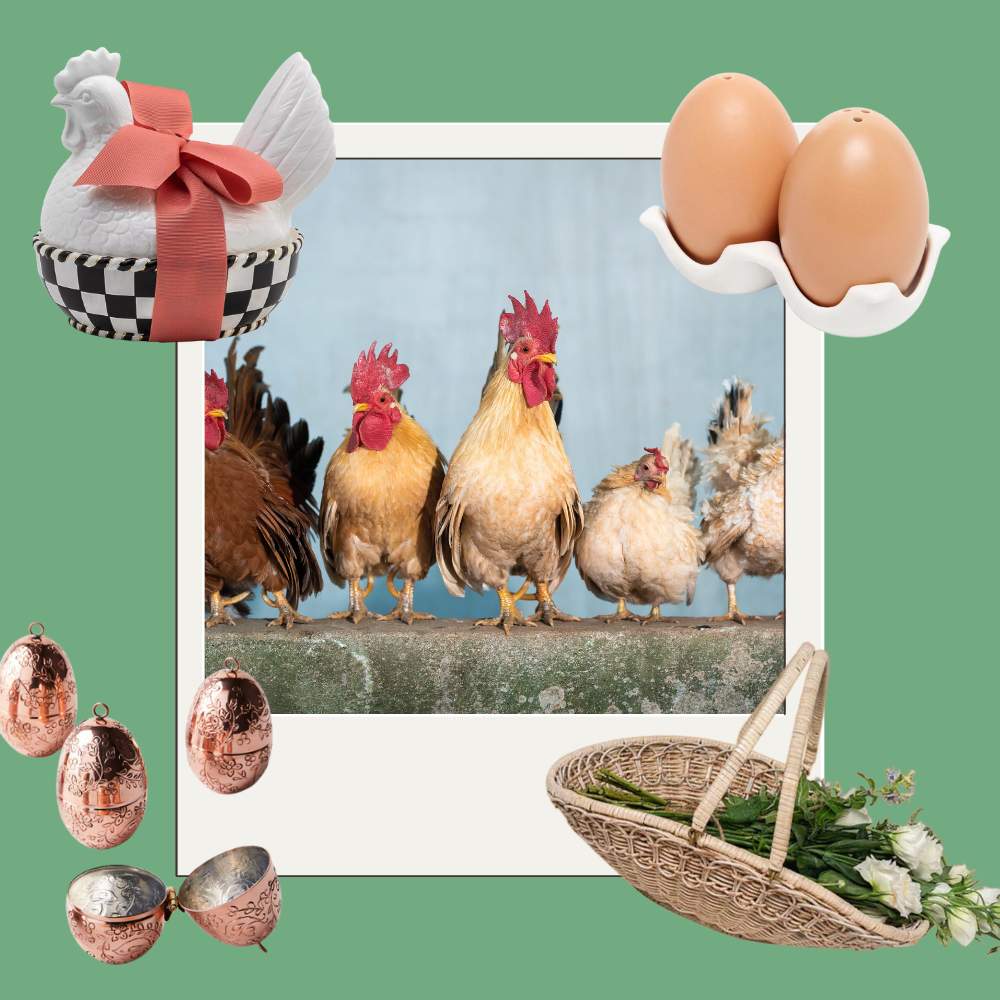Kohlrabi microgreens are tiny but mighty, offering a concentrated dose of vitamins, minerals, and antioxidants. Discover the best ways to enjoy these nutrient-rich greens, how to store them to maximize their freshness, the difference between kohlrabi sprouts and microgreens, and basically everything else about micro kohlrabi.
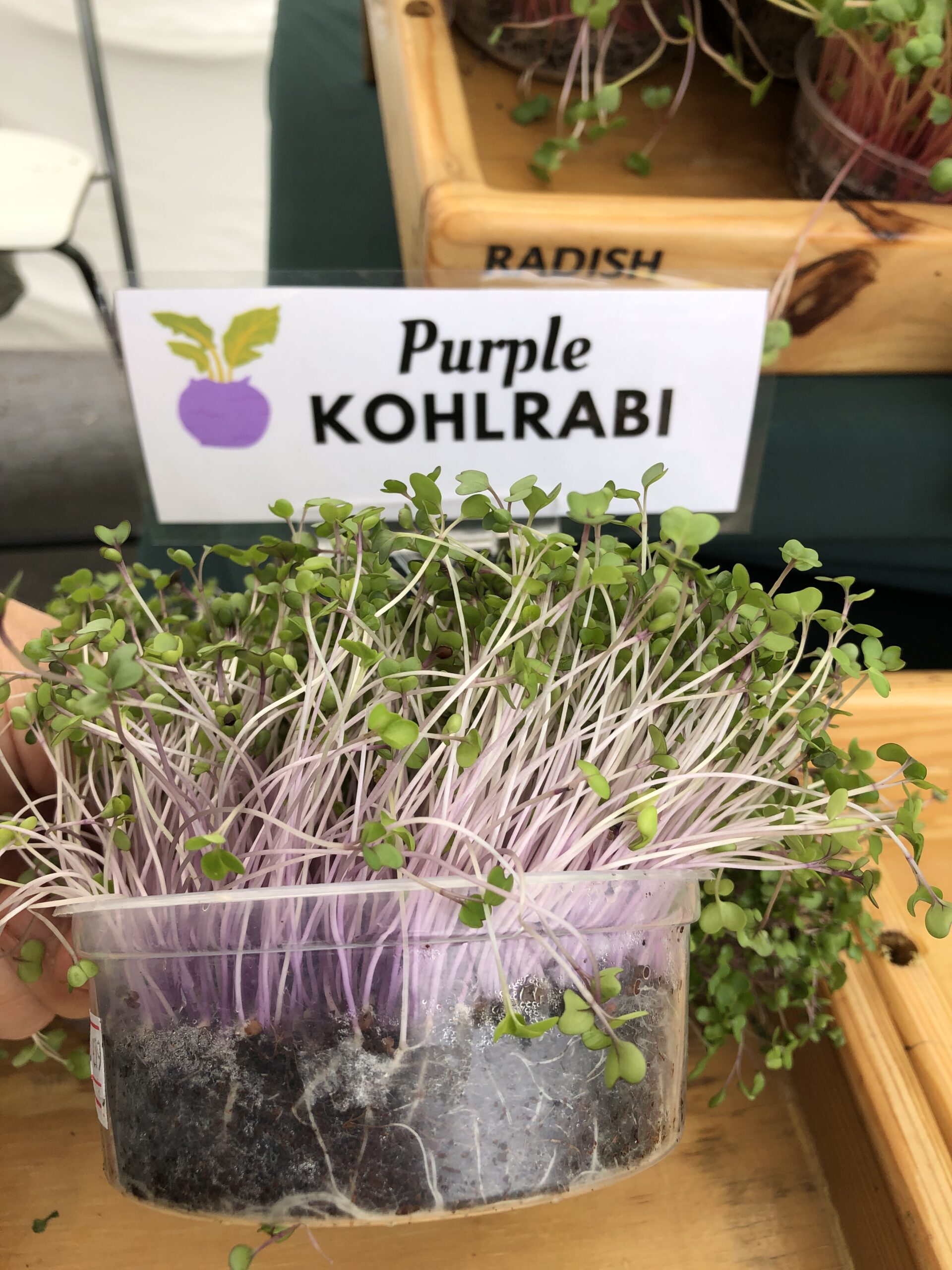
What Are Microgreens?
Tiny, vibrant, and packed with flavor, microgreens are young edible plants. Microgreens are famous for their concentrated flavors and nutrition profile. Relatively new to the culinary scene, microgreens themselves are not modern or new, they are simply new to us. That is because microgreens are essentially just seedlings.
Microgreens are vegetable, herb, or fruit seedlings that are consumed when only 1-4 leaves have emerged from the tiny plant. It was discovered that at the seedling (or microgreen) stage, many common vegetable and herb plants are packed with flavor and are much more nutritious than if they were full grown plants.
What Is Kohlrabi?
Kohlrabi is a unique vegetable. If you’ve never heard of kohlrabi, you aren’t alone. I only learned about kohlrabi a decade ago while strolling a farmer’s market. It looks like a big greenish or purple turnip, with large stems with big leafy greens. After peeling the outer skin/rind of the bulb, the inside is a pale white/yellow color.
The exciting thing about this veggie is that the big kohlrabi bulb grows above ground, unlike a turnip. All parts of the kohlrabi plant are edible. The bulb part is crisp and crunchy (like an apple), with a peppery cabbage-broccoli flavor, the stems are crunchy but a bit fibrous (like collard green stems), and the leaves are similar to big dark leafy greens like chard, kale, and collard greens.
Kohlrabi is a cruciferous vegetable from the Brassica Family. Kohlrabi is an excellent source of vitamin C, which boosts immunity and aids in iron absorption. It also provides a good dose of vitamin K, crucial for blood clotting and bone health. Furthermore, it is loaded with fiber, which promotes digestive health and keeps you feeling full.
What Are Kohlrabi Microgreens?
Kohlrabi microgreens are the seedlings of regular Kohlrabi plants. Kohlrabi seedlings become kohlrabi microgreens when they are planted and grown in a way to maximize the flavor and nutrient value, and harvested in just a couple of weeks (or less). Micro Kohlrabi is the young tender leaves of the kohlrabi plant.
Looking for directions to grow your own at home? Use my step-by-step kohlrabi growing guide and check out my master list of microgreen growing tools and seeds.
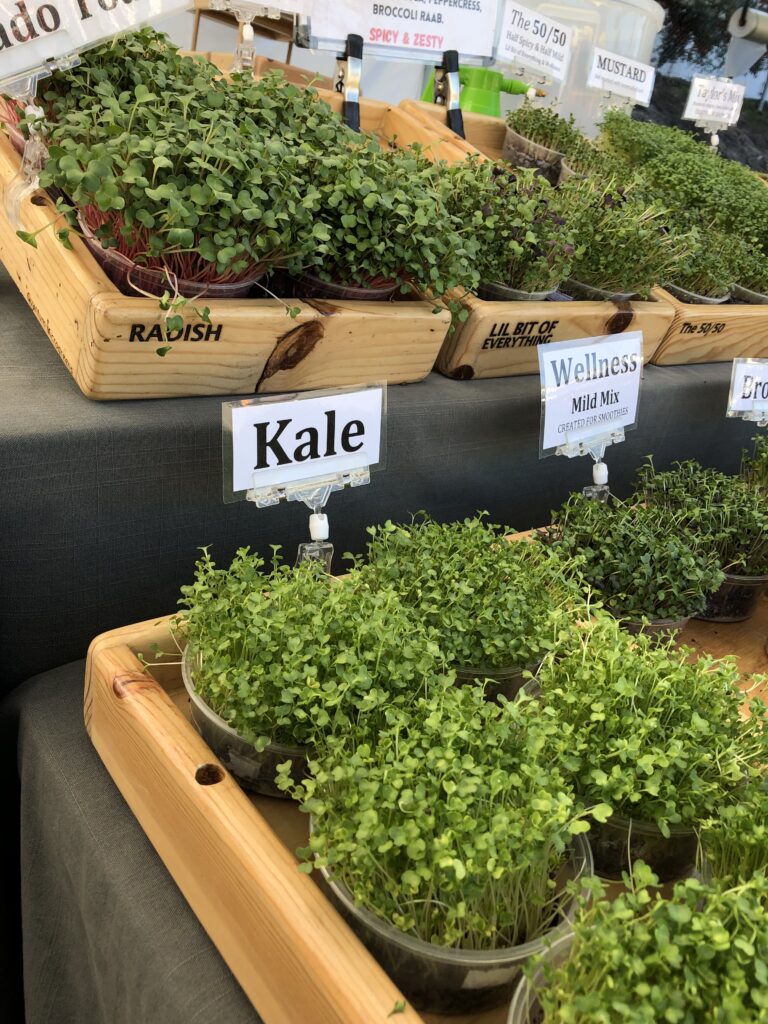
Kohlrabi microgreens are also called Micro Kohlrabi. All kohlrabi varieties can be grown as microgreens, though you really only find two main microgreens varieties: White Vienna and Purple Vienna Kohlrabi. When I farmed, I tended to grow Purple Vienna Kohlrabi. Purple Vienna Kohlrabi has a lovely light purple stem.
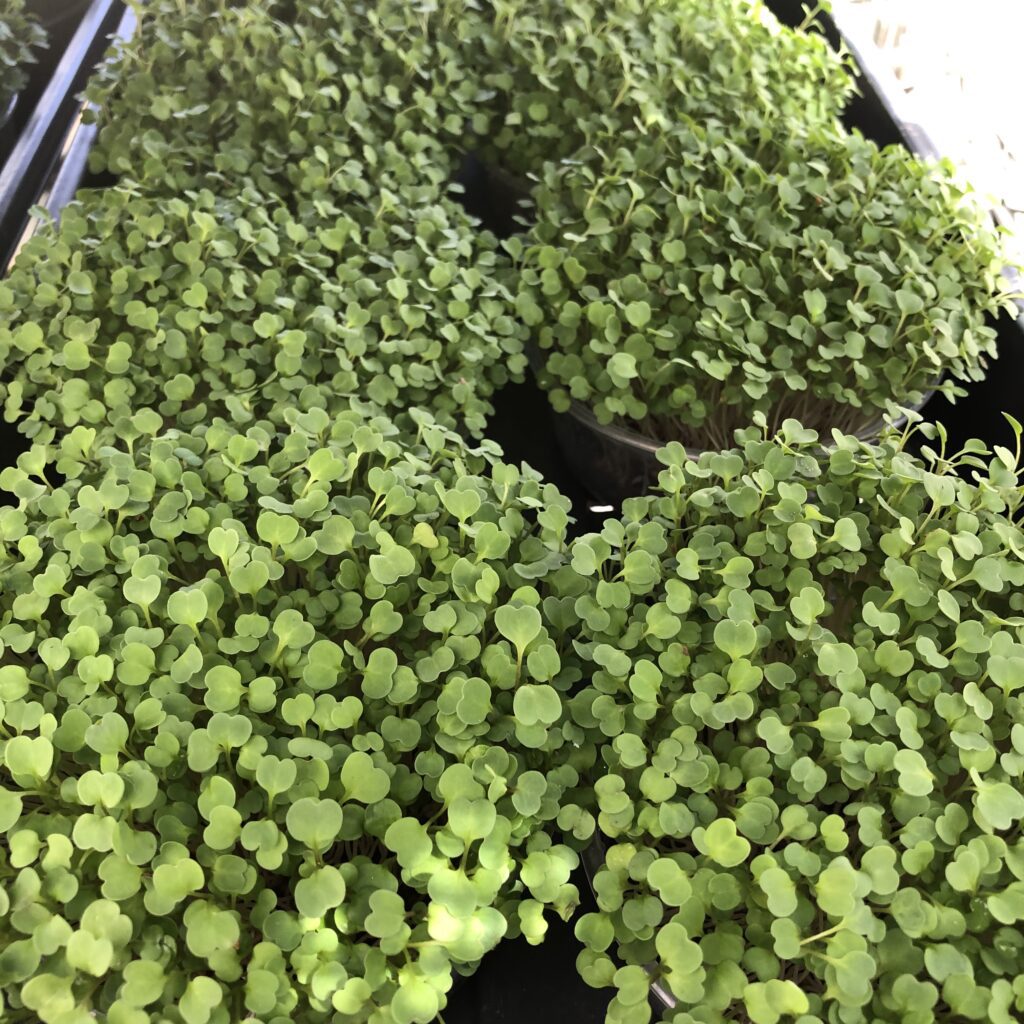
Are Kohlrabi Microgreens the Same as Kohlrabi Sprouts?
No, but this is a confusing question because a sprout is different from culinary Sprouts. When I say Sprouts, I am referring to the culinary food, which are edible sprouted seeds.
“To sprout” is a verb (referring to beginning to grow) and a “sprout” is a noun (meaning the plant that has just emerged from a seed and is beginning to grow). However, when referring to culinary “Sprouts” we are talking about edible plant seeds that have been sprouted (just beginning to grow) in water for consumption of the roots, stem, and immature leaves. So culinary Sprouts are very young seedlings grown in water in which the roots, stem (if any), and leaves (if any) are consumed. Sprouts are grown in the dark and the entire sprout is consumed (nothing is harvested).
Microgreens are also very young seedlings, but microgreens are older than culinary sprouts. Microgreens are often grown on a medium (I will call it soil, but it is not technically soil). Microgreen roots plunge downward into the soil, and a stem grows upwards. Microgreens are grown in light. Microgreens are harvested, meaning the stems are cut away from the roots. Microgreen roots are not consumed.
While kohlrabi sprouts and kohlrabi microgreens are the same plant, the growing methods are different, the taste is different, the texture is different, and they look different from one another. The nutrition profile is also different. Kohlrabi Microgreens are older than Kohlrabi Sprouts. Kohlrabi Sprouts are not commonly found in grocery stores (unlike Broccoli Sprouts).
Read my post about the differences between sprouts and microgreens here.
How To Use Kohlrabi Microgreens?
Microgreens are usually consumed raw and can be used as a garnish (a few stems atop a meal) or the main attraction of a dish. Kohlrabi Microgreens are extremely versatile because of their mild flavor and high nutrient content. Nearly any dish, sandwich, wrap, and soup can benefit from a handful of micro kohlrabi on top just before consuming. Even if you aren’t a fan of mature kohlrabi, give micro kohlrabi a try. It feels different and even tastes a little like broccoli.
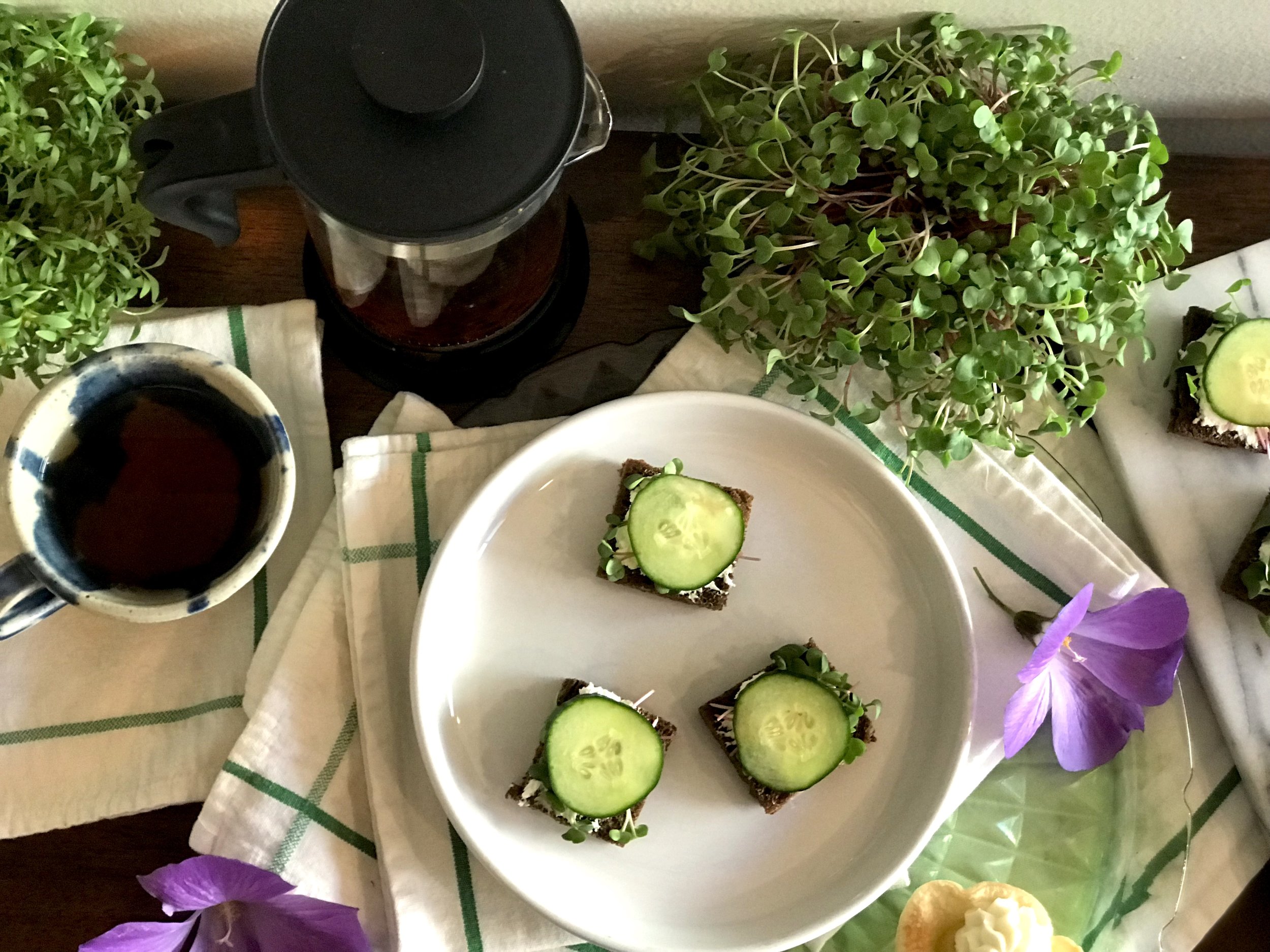
Are Kohlrabi Microgreens Healthy?
Kohlrabi microgreens are a rich source of nutrients, including vitamins A, C, and K, as well as minerals like calcium and iron.
Kohlrabi microgreens are cruciferous vegetables, which are high in glucosinolates, compounds that have been linked to various health benefits, such as cancer prevention and improved heart health. Glucosinolates are linked to the creation of sulforaphane in our bodies. Sulforaphane glucosinolate is a phytochemical that is produced when the enzyme myrosinase breaks down glucoraphanin, a glucosinolate found in Micro kohlrabi.
Kohlrabi microgreens offer a wealth of health benefits thanks to their rich content of polyphenols, phylloquinone (vitamin K1), lutein, and beta-carotene. These compounds provide powerful antioxidant protection, supporting overall well-being.
The Science: Studies About Microgreens
Unless you’ve earned a degree in nutrition and food biology and farming, it is truly dizzying to decipher journal articles about microgreens. Yes, microgreens studies are published all the time, by scholars all over the globe. Results are very consistent regarding the considerable amounts of phytochemicals present in microgreens and their overall contribution to healthful eating. But the details vary greatly between studies. The variation is probably due to the considerable number of species available and the differences in farming and storage methods.
That being said, there is still value in understanding the results of individual studies. So, here is a takeaway from Microgreens of Brassicaceae: Genetic diversity of phytochemical concentrations and antioxidant capacity LWT Food Science and Technology V. 101, March 2019: Compared to their more mature vegetable counterparts reported in previous studies, Brassica microgreens (like Kohlrabi) were generally packed with higher amount of total phenolics, such as broccoli (282.8 mg GAE/100 g FW vs 63.4–87.5 mg GAE/100 g FW), green cabbage (272.4 mg GAE/100 g FW vs 92.5 mg GAE/100 g FW), and turnip (159.7 mg GAE/100 g FW vs 12.0 mg GAE/100 g FW)*.
Microgreens—A Comprehensive Review of Bioactive Molecules and Health Benefits
What Do Kohlrabi Microgreens Taste Like?
Kohlrabi microgreens are mild and earthy and taste like a mix between mild cabbage, broccoli and turnip. They are easy to chew and can easily fade into the background of a meal because of their mild flavor.
They are great mixed with other microgreens to create unique blends.
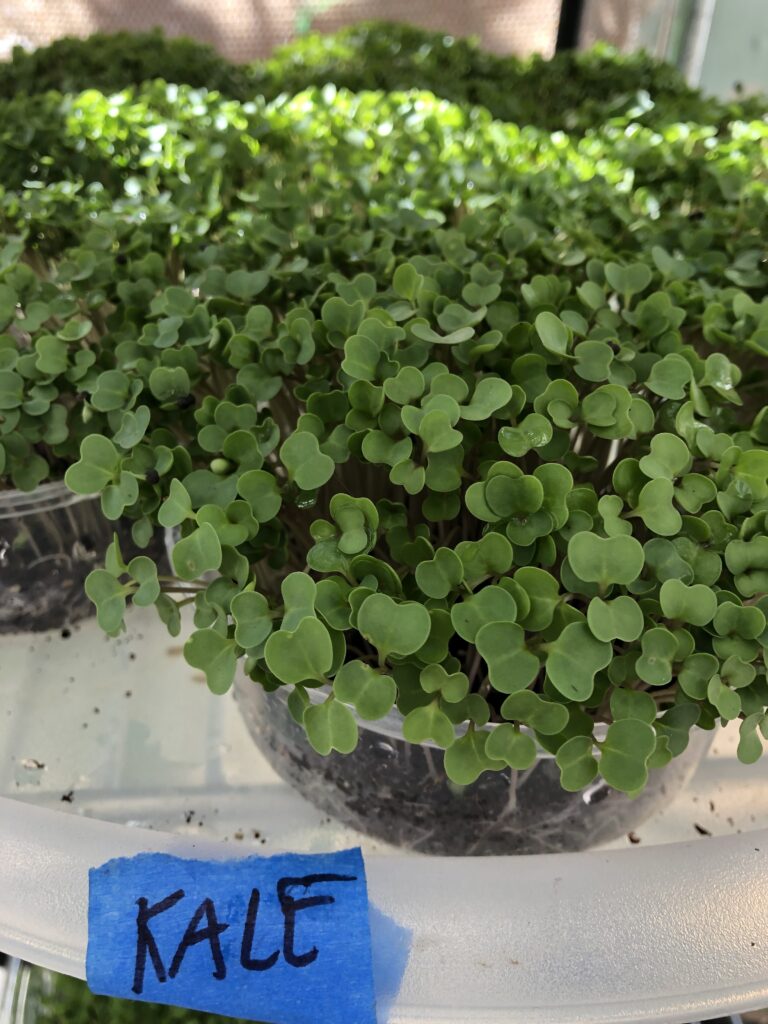
What’s the Best Way to Eat Kohlrabi Microgreens?
They are the best when raw. If you cook microgreens, the leaves quickly get mushy, while the stems become stringy. When cooked alone, kohlrabi microgreens quickly become a pile of stringy green glob when cooked. So, I recommend eating them raw and just harvested (cut) or mixed with other food if cooked. However, cooking microgreens is possible.
Guidelines for Cooking Microgreens
A brief cook with just a few microgreens can be lovely. I like to sprinkle a few microgreens on my fried eggs right before I flip them. Or fold a few microgreens in scrambled eggs when they are mostly set up but still gooey. I also like to make omelets and frittatas with micro kale and broccoli.
Some people are adamant that microgreens should never be cooked because of nutrient loss due to heat. I disagree. While there may be some nutrient loss when heat is applied, who cares? Humans eat for reasons other than maximum nutrient density. We have the luxury to eat for pleasure. Microgreens are still nutrient-dense, even when cooked.
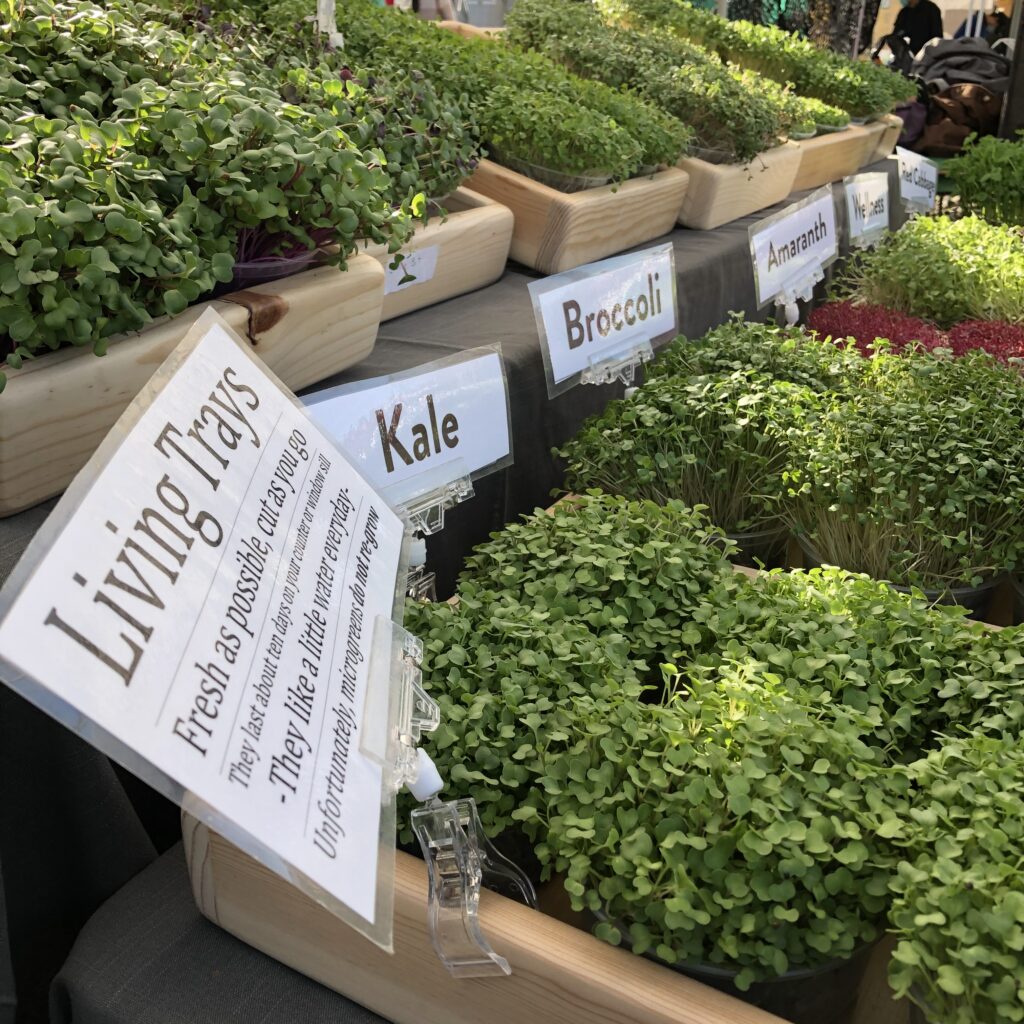
How Long Do Kohlrabi Microgreens Last?
It depends on whether you have packaged or living kohlrabi microgreens. Living microgreens that you harvest as you eat them will always last longer than microgreens already cut.
Still Living and Growing
If you are lucky enough to have kohlrabi microgreens still growing (i.e. not cut and packaged), you will have about a week to two weeks to use them (depending on how “mature” the microgreens were when you got them). Once the third leaf begins to show, eat them within a couple of days. The texture becomes less desirable and the flavor begins to fade once the pretty third leaf begins to grow.
Packaged
It is hard to find commercial micro kohlrabi, so search your local farmer’s market for a microgreens farmer. The shelf-life of kohlarbi microgreens is not long. Harvested (already cut) micro kohlrabi must be fully dried before being stored in the refrigerator. Use an airtight container with a paper towel to absorb moisture. Store in a rigid container to avoid crushing or bruising. As long as there is no moisture in the package, they can last 4-5 days in the fridge.
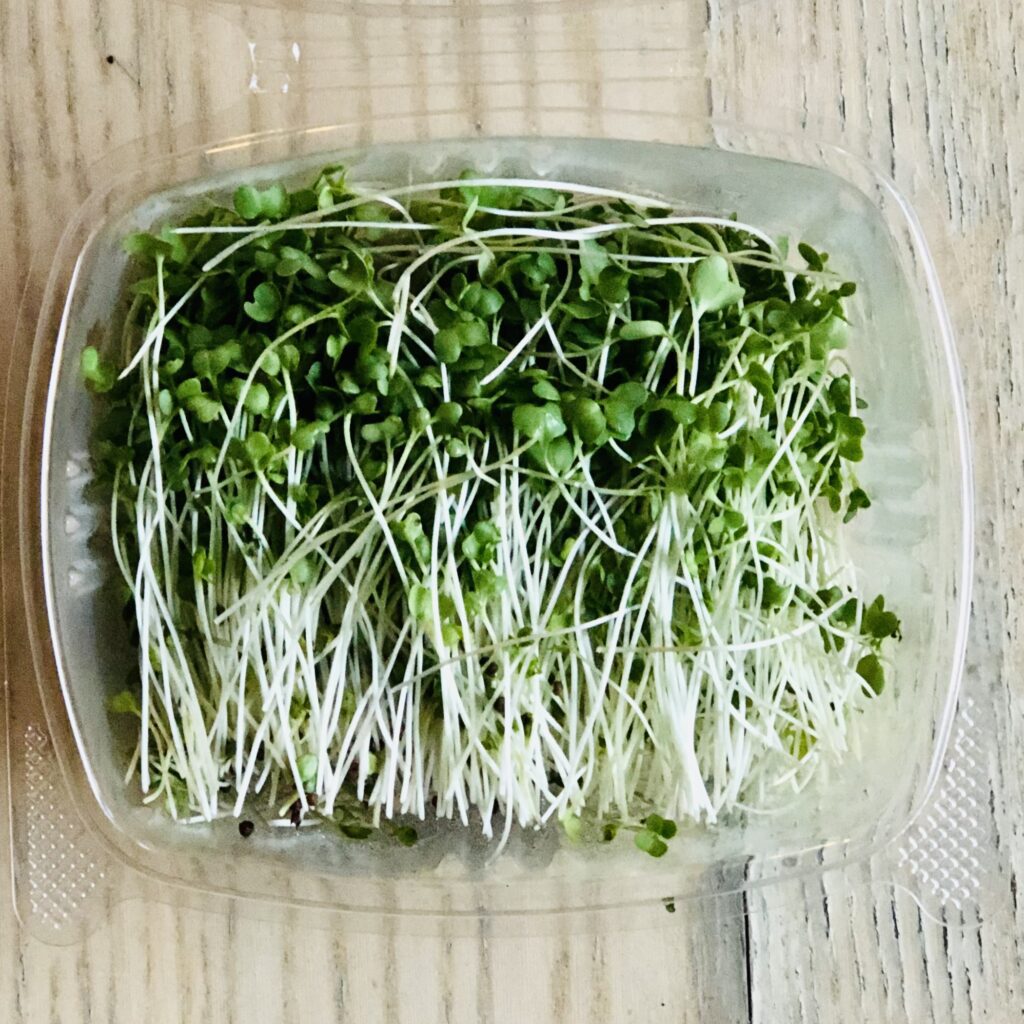
Tip: If you refrigerate wet micro kohlrabi, the greens will get mushy and totally gross. Be careful to ensure the container does not have condensation–wipe away any moisture. You really don’t want to smell a package of mushy microgreens. Trust me, get that condensation out.
Can You Freeze Kohlrabi Microgreens?
Yes, but they will only be palatable if blended into a smoothie or blender juice. Otherwise, previously frozen and defrosted microgreens will be complete mush. I highly recommend brassica family microgreens, (kale, broccoli, kohlrabi) for smoothies. They are mild and practically dissolve in the blender.
How Do You Grow Kohlrabi Microgreens?
Growing kohlrabi microgreens yourself isn’t that hard to do. I wrote a full step-by-step growing guide for kale microgreens.
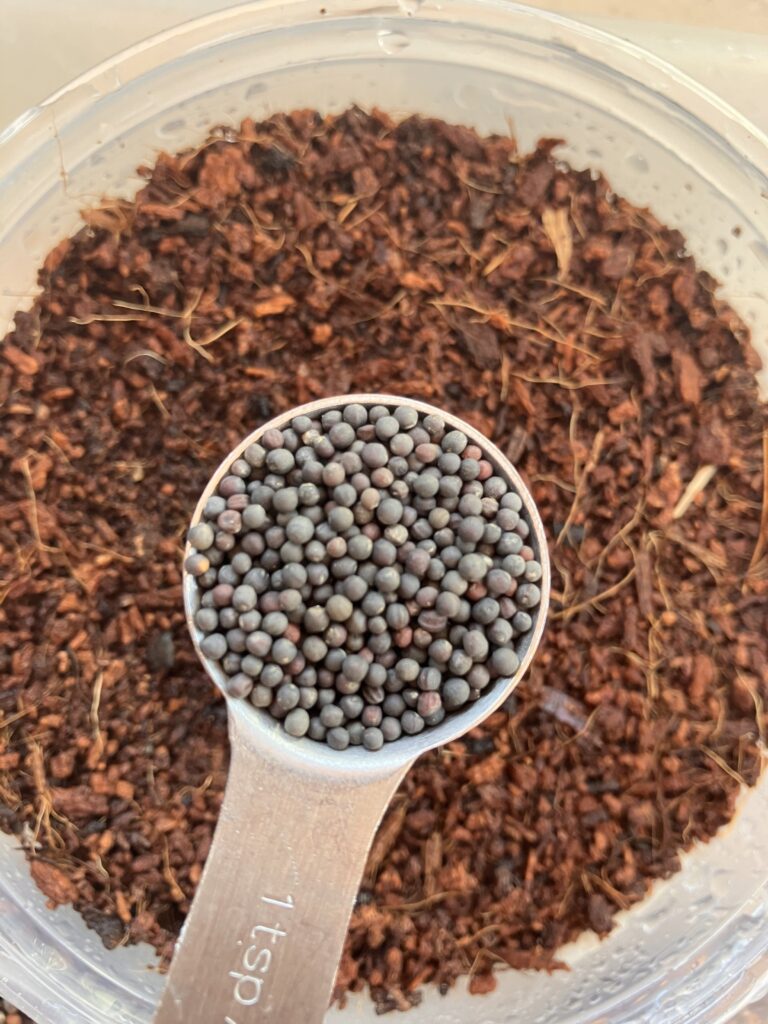
Ideas for Eating Kohlrabi Microgreens
Kohlrabi microgreens are fantastic on:
- Sandwiches
- Salads
- Wraps
- Eggs
- Avocado toast
- Smoothies
Substitute Micro Kohlerabi in my recipe for Micro Kale Mango Lassi.
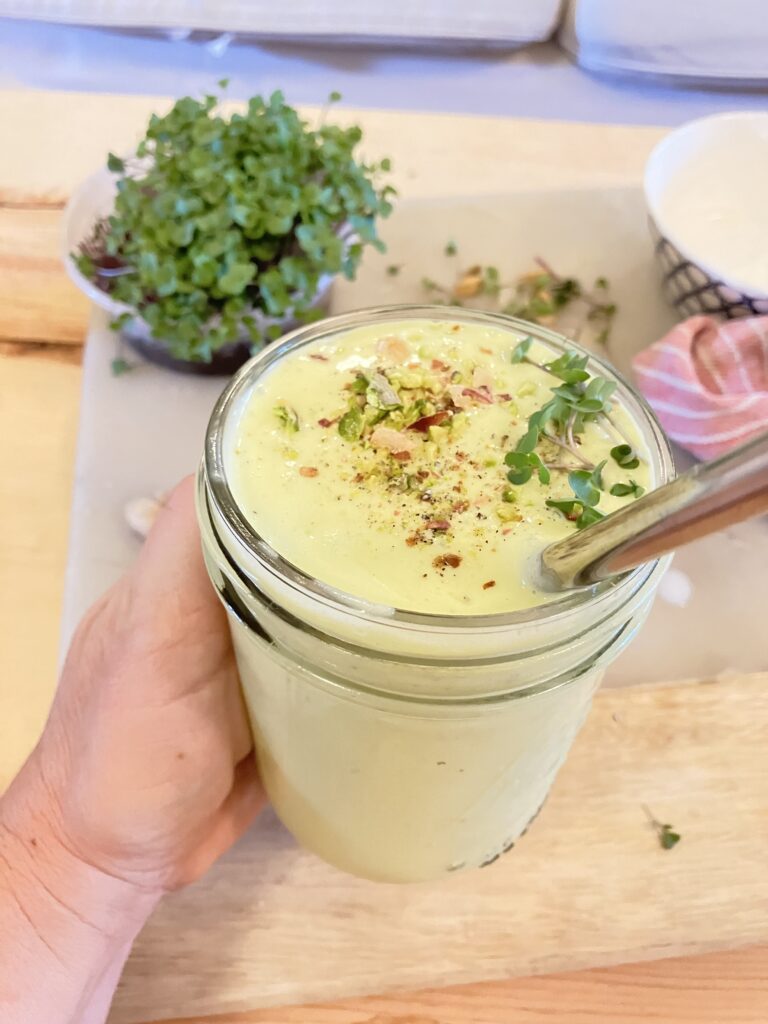
More Microgreens Varieties
How to Grow Broccoli Microgreens
Learn All About Arugula Microgreens
Learn All About Sunflower Shoots—Yes, They Are Microgreens!
All About Mustard Microgreens (Intense Mustardy Flavor)
All Your Questions Answered About Radish Microgreens
Why We Should All Eat Broccoli Microgreens
Microgreens Care
3 Ways to Wash Microgreens And Avoid Mushy Microgreens
Growing Microgreens: Should You Grow Them in Your Garden?
White Fuzz on Microgreens: Is It Microgreens Mold?
Growing Microgreens: Should You Grow Them in Your Garden?
Microgreens Care: 2 Reasons You Have Gnats In Your Microgreens
